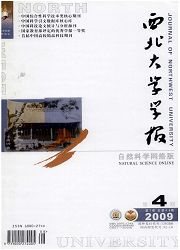

 中文摘要:
中文摘要:
该研究在柴达木盆地西北缘渐新世新发现了一件保存较完整的鲤科鲃亚科鱼类化石,化石体长194 mm,出露部分长211 mm,体延长,稍侧扁,咽骨细长,呈镰状弯曲;咽齿3行,圆柱状,末端尖且稍弯曲。新材料的体型、咽骨形态及咽齿齿式与光唇鱼属、圆唇鱼属和四须鲃属3属特征相近,仅在体长与头长的比值上有一定区别。通过特征比较发现,柴达木盆地西北缘渐新世新发现的鲃亚科鱼类与光唇鱼属、圆唇鱼属和四须鲃属有一定的亲缘关系。鲃亚科化石在研究区属首次发现,且是青藏高原地区首次发现的较为完整的渐新世鲃亚科化石。根据现生鲃亚科的栖息环境推测,研究区当时应为淡水湖泊环境,海拔高度在1 250~2 500 m。
 英文摘要:
英文摘要:
To describe a kind of fossils of Barbinae fish which has been kept and preserved intact in the northwest of Qaidam Basin during the time of Oligocene. Its body length is 194 mm and its exposed part is 211 mm with a shape being flat and long. The pharyngeal bones shape like sickle with 3 rows of pharyngeal teeth which are cylindrical and sharp,bent in the tip. The body type,the shape of pharyngeal bone and the form of the new material are similar to those of the three genera of the Acrossocheilus Oshima,the Cyclocherilichthys Bleeker,and the Barbodes Bleeker,but there is also certain difference between the body length and the head length. According to the existing characteristics,it is speculated that the newly discovered Barbinae fossil of the Oligocene in the northwestern Qaidam Basin has a certain genetic relationship with the Acrossocheilus Oshima,the Cyclocherilichthys Bleeker,and the Barbodes Bleeker. It is not only the first newly discovery in the research field but also the first well-intact fossils in the Tibetan Plateau during the age of Oligocene. According to the inhabiting enviroment of the exiting Barbinae,the research area might be located in the freshwater lake and the altitude is from 1 250 to 2 500 m.
 同期刊论文项目
同期刊论文项目
 同项目期刊论文
同项目期刊论文
 期刊信息
期刊信息
